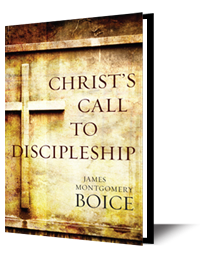
Each of these pictures in Matthew 24:36-51 has been alike in stressing the sudden nature of Christ's return. But each has also added its own unique elements. The picture of the flood has reminded us that many persons will be lost. The picture of the two men working in the fields and the two women grinding at the mill points to a radical separation and reminds us that we are not saved by being close to a believer. The picture of the thief reminds us that our souls are valuable and that it is prudent to be ready.

The third of Jesus’ illustrations is of a thief breaking into a house. "But understand this: If the owner of the house had known at what time of night the thief was coming, he would have kept watch and would not have let his house be broken into" (v. 43).
This parable also teaches the sudden and unpredictable coming of the Lord, and is used this way in four other New Testament passages. Paul wrote, "The day of the Lord will come like a thief in the night. While people are saying, ‘Peace and safety,’ destruction will come on them suddenly, as labor pains on a pregnant woman, and they will not escape" (1 Thess. 5:2-3).

The second picture Jesus paints to describe the nature of things at his return is in verses 40 and 41. "Two men will be in the field; one will be taken and the other left. Two women will be grinding with a hand mill; one will be taken and the other left." Here the suddenness of Christ’s return introduced in the reference to the days of Noah is carried forward, but there is the additional thought of a sudden separation. Two men working in the field would be coworkers. Two women working with a hand mill would be closely related, most likely a mother and daughter or two servants in the same household. Outwardly they would seem to be in identical situations and even identical in their relationships to Christ. But at his return one will be taken and the other left behind.

The first story Jesus uses to emphasize the suddenness of his coming is the destruction of the earth by flood in the days of Noah. This was a well-known case of God’s judgment of wickedness in history, and it is referred to quite naturally by Old Testament prophets like Isaiah (Isa. 54:9) and Ezekiel (Ezek. 14:14, 20) and by New Testament writers like the author of Hebrews (Heb. 11:7) and Peter (1 Peter 3:20; 2 Peter 2:5). Jesus refers to it in verses 37-39.

One of the most well-known passages dealing with the end times is not found in the book of Revelation, but in Matthew, chapter 24. In this passage, Jesus is teaching his disciples what signs will accompany his return. What the disciples were to know is that "when you see all these things" the end will be "near, right at the door." It refers to the terrible characteristics of their age, and ours–false messiahs, wars, earthquakes, famines, persecutions, apostasy, and false prophets–all of which Jesus’ disciples saw in their time and we continue to see today. Having seen these things, we should know that the return of Jesus Christ is near, even at the door. That door could be flung open by Christ at any moment.


















